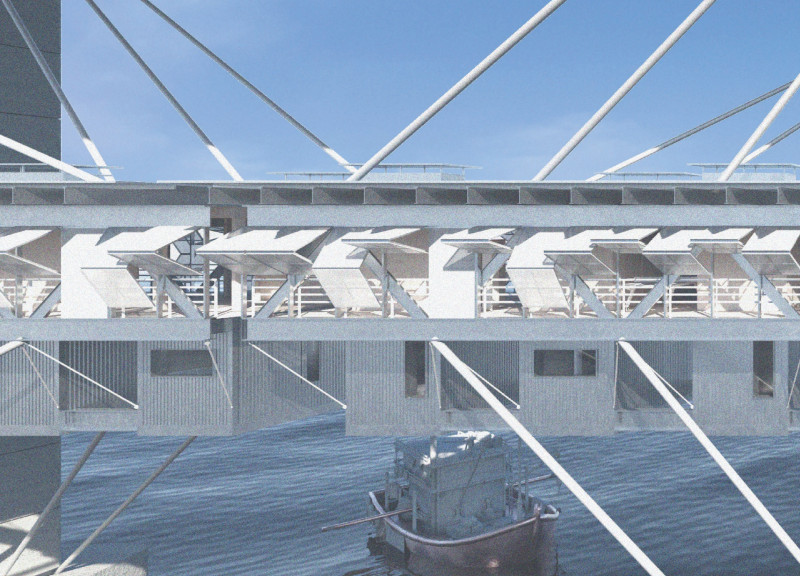5 key facts about this project
### Project Overview
"In Between the Boundary" is an architectural initiative situated on the Gangguao Bridge in Southeast China, linking the regions of Zhuhai, Hong Kong, and Macau. The project addresses the need for enhanced communication and interaction among these areas, emphasizing the role of physical space in bridging political and social divides. By utilizing existing infrastructure, the design seeks to promote community interaction and foster relationships between diverse populations.
### Spatial Configuration and User Experience
The design features a dual-layered platform divided into two distinct sections: a lower communal living space and an upper area comprised of private housing units. This arrangement facilitates social interaction among residents while preserving individual privacy. Pathways are carefully integrated, offering both open and enclosed settings that cater to a variety of user needs. Modular units afford flexibility, allowing residents to customize their living environments and adapt spaces for communal activities or personal comfort.
### Materiality and Sustainability
Incorporating sustainable practices, the project employs a selection of robust and functional materials. Concrete serves as the primary structural component, ensuring stability and longevity, while wood adds warmth to interior spaces. Metal panels are utilized for external facades, providing durability and weather resistance. Operable aluminum elements facilitate natural ventilation, and the inclusion of glass enhances visibility and interaction with the surrounding environment. This strategic use of materials not only supports the design’s aesthetic intentions but also addresses climate resilience and environmental considerations.



















































